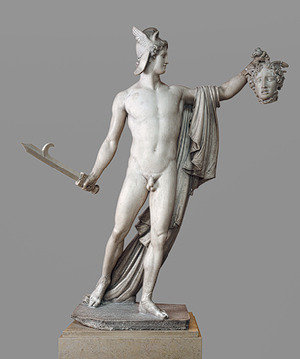Antonio Canova
dal 20/1/2014 al 26/4/2014
Segnalato da
20/1/2014
Antonio Canova
Metropolitan Museum of Art - MET, New York
In this exhibition is revealed a less familiar Canova, in a series of full-scale plaster models illustrating episodes from the Old and New Testaments.The sculptures in this exhibition were made in connection with a project for 32 reliefs illustrating scenes from the Bible.

Antonio Canova (1757-1822), the greatest of all Neoclassical sculptors, remains famous above all for his elegant, nude mythological subjects carved in marble. But he also worked in a spiritual mode, at once deeply serious and deceptively simple. This less familiar Canova is revealed in an extraordinary series of full-scale plaster models illustrating episodes from the Old and New Testaments that will be on view in Antonio Canova: The Seven Last Works at the Metropolitan Museum beginning January 22, 2014. The sculptures in this exhibition were made in connection with a project for 32 reliefs, illustrating scenes from the Bible, that were to adorn the Tempio Canoviano, the church—later his mausoleum—that he built for his home town of Possagno. He completed only seven of the models before his death. They constitute Canova’s last, profoundly moving masterworks.
The exhibition is made possible in part by Hester Diamond and Jon and Barbara Landau.
The low reliefs, fashioned as metopes, were intended to occupy the frieze on the three sides of the Tempio’s porch. Canova worked on the full-scale clay models between December 1821 and April 1822, by which date he had completed four reliefs from the Book of Genesis and three from the Gospel of Luke: The Creation of the World, The Creation of Adam, Cain and Abel, The Sacrifice of Isaac, The Annunciation, The Visitation, and The Presentation of Christ in the Temple. He then had plaster casts made—these were a distinctive feature of Canova’s sculptural practice that allowed him to review his compositions and transfer them into stone. He sent the plasters from Rome to Venice, where reputable sculptors carved them in Istrian stone. Canova died a few months later, following a trip to Possagno to check on the progress of work on the temple, leaving his final project incomplete. Drawing inspiration from ancient sculpture and early Renaissance masters, the models are striking for the marked linearity of the figures, arranged in brilliantly syncopated compositions.
Newly restored, the works will be lent for the first time to the United States. Six of the reliefs come from the Gallerie dell’Accademia in Venice and one from the Gipsoteca in Possagno. New technical study and art-historical research demonstrate that of the three series of these plaster reliefs that survive, the Accademia reliefs are Canova’s original plaster working models. They still preserve the impression of the clay reliefs from which they were molded. A seventh plaster, The Creation of the World, from the Gipsoteca in Possagno, will be exhibited in place of the lost original.
Press Preview Tuesday, January 21, 10 a.m.–noon
MET museum
1000 5th Ave, New York
Hours: Friday-Saturday 10:00 a.m.-9:00 p.m. Sunday-Thursday 10:00 a.m.-5:30 p.m.
Admission: Adults $25.00, seniors (65 and over) $17.00, students $12.00



